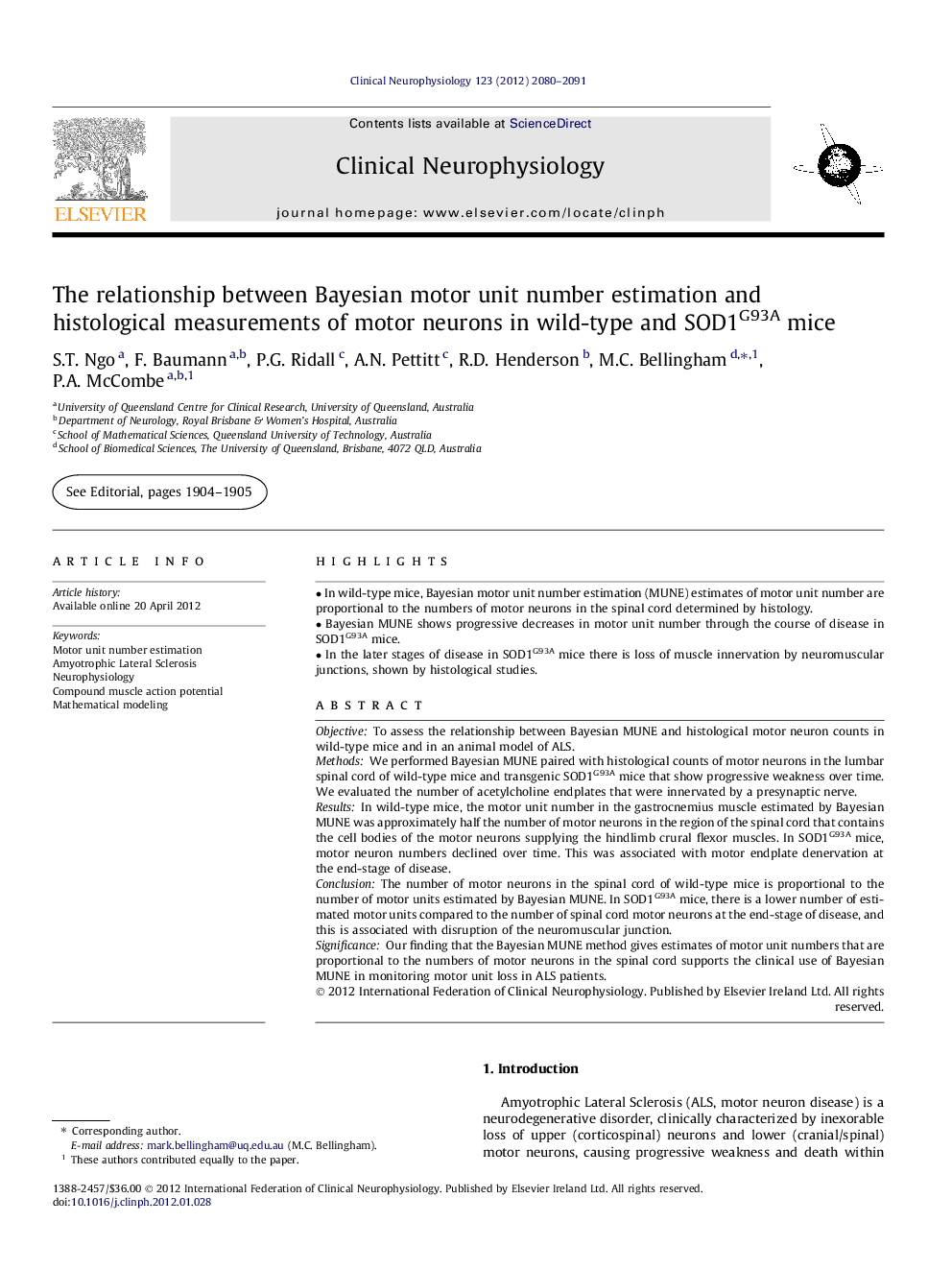| Article ID | Journal | Published Year | Pages | File Type |
|---|---|---|---|---|
| 3045393 | Clinical Neurophysiology | 2012 | 12 Pages |
ObjectiveTo assess the relationship between Bayesian MUNE and histological motor neuron counts in wild-type mice and in an animal model of ALS.MethodsWe performed Bayesian MUNE paired with histological counts of motor neurons in the lumbar spinal cord of wild-type mice and transgenic SOD1G93A mice that show progressive weakness over time. We evaluated the number of acetylcholine endplates that were innervated by a presynaptic nerve.ResultsIn wild-type mice, the motor unit number in the gastrocnemius muscle estimated by Bayesian MUNE was approximately half the number of motor neurons in the region of the spinal cord that contains the cell bodies of the motor neurons supplying the hindlimb crural flexor muscles. In SOD1G93A mice, motor neuron numbers declined over time. This was associated with motor endplate denervation at the end-stage of disease.ConclusionThe number of motor neurons in the spinal cord of wild-type mice is proportional to the number of motor units estimated by Bayesian MUNE. In SOD1G93A mice, there is a lower number of estimated motor units compared to the number of spinal cord motor neurons at the end-stage of disease, and this is associated with disruption of the neuromuscular junction.SignificanceOur finding that the Bayesian MUNE method gives estimates of motor unit numbers that are proportional to the numbers of motor neurons in the spinal cord supports the clinical use of Bayesian MUNE in monitoring motor unit loss in ALS patients.
